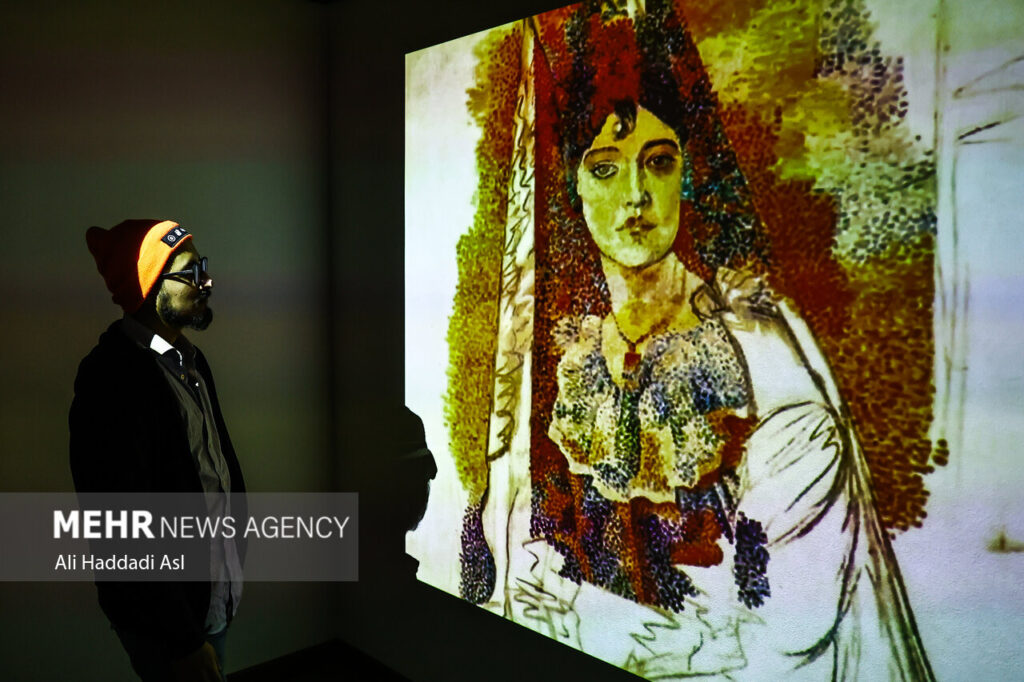In a historic movement, the Museum of Contemporary Art Tehran (Tmoca) is opening a safe to showcase “Picasso of Picasso,” an exhibition that introduces 66 works by Pablo Picasso, which many people can’t see.
The exhibition, which opened on March 12, 2025, features a diverse collection of Picasso’s works, including paintings, drawings and prints that span various periods of his prolific career. Among the highlights is the “La Tauromaquia” series, complete with 26 Aquatint prints created in 1957.

Other notable works reflect Picasso’s interpretations of “The Painter and His Model,” “The Open Window on Rue Pentievre,” “The Baboon and Young,” and “The Crying Woman,” as well as Picasso’s exploration of human emotions and forms.



Baboon and Young
Baboon and Young (French: Laguenon and his son Petit) depicts a baboon standing with his baby in a mesmerizing bronze sculpture by Pablo Picasso.
Created in October 1951 at Picasso’s villa near Valaulis, this unique artwork combines traditional sculpture with art of imaginative discovery. Picasso skillfully assembled everyday items – two toy cars form the baboon’s head, a ceramic jar forms her body, and the spring of the car twists into her tail.

Bridge culture through art
“Picasso of Tehran” is more than just an exhibition. It is a dialogue between cultures. Curated by Picasso’s works, the works of George Braque, Robert Delaunai, Joan Miro, and other contemporary members of Picasso’s works, as well as well as famous Ethemadi such as Balam Dabili, Berman Mohase, Jalil Giapor, Mosenva Girimughadam, Garnik del Haddam, Palf Haddam, and Mornik del Haddam. This arrangement promotes dialogue between Western modernism and Iranian artistic expression, highlighting a universal artistic language.

The exhibition attracted a great public interest with over 55,000 visitors attending within the first 18 days. This overwhelming response highlights the enthusiasm of Iranian people for their involvement with the global art, and reflects the broader cultural openness.
The opening ceremony was attended by well-known figures, including Spanish ambassador Antonio Sanchez Bendito Gaspard, who highlighted the role of the exhibition in strengthening Iran-Spanish cultural ties. He emphasized Picasso’s universal message of peace and coexistence. This is especially evident in works like Guernica.

Glimpse into Picasso’s life

Born on October 25th, 1881 in Malaga, Spain, Pablo Picasso was an incredible talent from a young age. His father, Jose Luis Blasco, was an art teacher who recognized and nurtured his son’s extraordinary abilities. By the age of 13, Picasso’s skills exceeded his father’s skills, and he began pursuing formal art education in Barcelona and later Madrid. However, the traditional academic environment failed to contain his innovative spirit. Moved to Paris in 1904, Picasso was immersed in avant-garde scenes, leading to the development of groundbreaking styles such as cubism alongside Georges Black. His prolific career spans over 70 years, producing over 20,000 artwork and continually redefining contemporary art.
Cultural diplomacy activities
“Picasso of Tehran” stands as a testament to the enduring power of art that transcends cultural and political boundaries. By revealing these masterpieces, Tmoca not only celebrates Picasso’s legacy, but also reaffirms Iran’s place in the global art community. The exhibition is a must-see for art lovers and is an important milestone in Tehran’s cultural renaissance. The exhibition will end on May 21st.
Report: Mohaddeseh Pakravan

